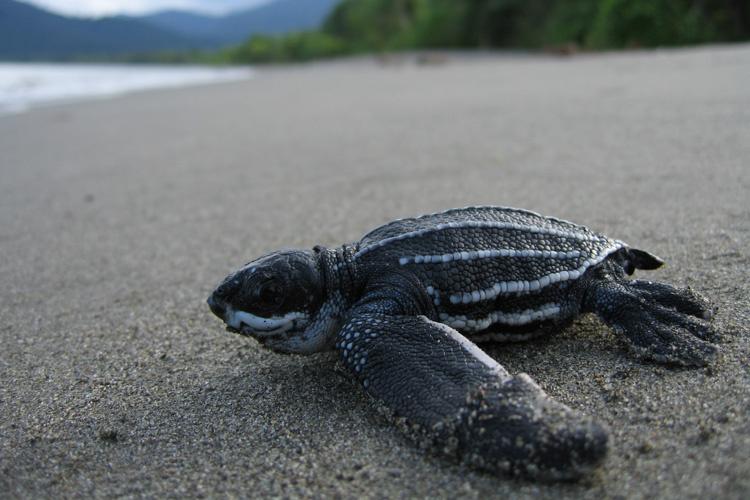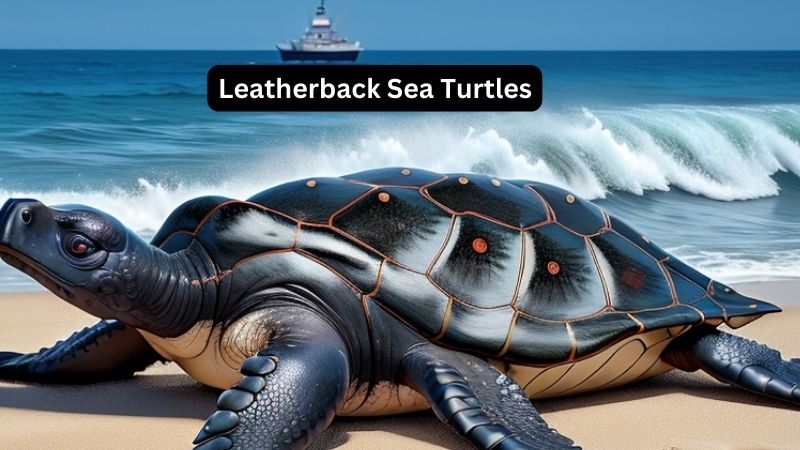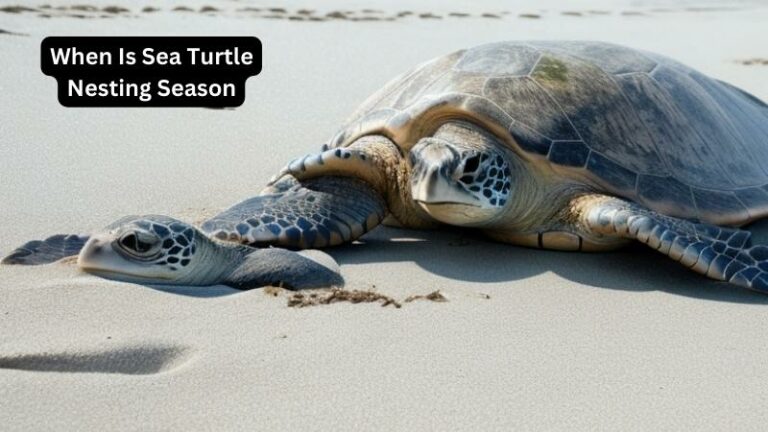How Many Leatherback Sea Turtles Are Left
Today we discuss How Many Leatherback Sea Turtles Are Left. In the vast expanse of our oceans, a gentle giant silently glides through the depths, capturing the imagination of all who encounter it. The leatherback sea turtle, with its massive size and distinctive leathery shell, has captivated scientists and conservationists alike for years. But as we delve deeper into the pressing issue of environmental preservation, a haunting question arises: how many of these magnificent creatures are left in our world?
The plight of the leatherback sea turtle is a sobering reminder of the fragile state of our planet’s biodiversity. These ancient creatures, which have roamed the seas for over a hundred million years, now face the threat of extinction.
Human activities such as pollution, habitat destruction, and climate change have pushed these remarkable beings to the brink, leaving us to wonder just how many of them remain in our vast oceans. Join me as we embark on a journey to uncover the truth behind the dwindling population of leatherback sea turtles, and explore the urgent actions needed to ensure their survival for generations to come.
 Source: noaa.gov
Source: noaa.govHow Many Leatherback Sea Turtles Are Left?
Leatherback sea turtles, also known as Dermochelys coriacea, are the largest turtles on Earth. These magnificent creatures play a vital role in maintaining the health of our oceans’ ecosystems. However, due to various threats, their population has been rapidly declining in recent years. In this article, we will explore the current status of leatherback sea turtles and discuss the efforts being made to protect and conserve them.
The Decline of Leatherback Sea Turtles
Over the past few decades, the number of leatherback sea turtles has significantly decreased. It is estimated that there are only around 34,000 nesting females left in the global population. This decline can be attributed to several factors, including habitat loss, pollution, climate change, and unsustainable fishing practices. Leatherback sea turtles face numerous challenges, such as coastal development destroying their nesting habitats and plastic pollution affecting their feeding grounds.
Another significant threat to leatherback sea turtles is incidental capture in fishing gear, particularly in longline and gillnet fisheries. These turtles often get entangled in the fishing gear, leading to injuries and death. The indiscriminate use of fishing methods that do not differentiate between target species and non-target species poses a significant risk to the survival of leatherback sea turtles.
Conservation Efforts for Leatherback Sea Turtles
Recognizing the critical status of leatherback sea turtles, various conservation organizations and governments have been working tirelessly to protect and conserve these magnificent creatures. One of the primary strategies employed is the establishment and management of protected areas and marine reserves. These areas provide safe nesting sites and protect the turtles from human disturbance.
Additionally, efforts are being made to reduce the impact of human activities on leatherback sea turtles. For instance, campaigns have been launched to raise awareness about the importance of reducing plastic waste and promoting responsible fishing practices. International agreements, such as the Inter-American Convention for the Protection and Conservation of Sea Turtles, have been implemented to ensure the cooperation of countries in safeguarding these endangered species.
Faqs for Leatherback Sea Turtles:
There is currently no exact number that can accurately determine the population of leatherback sea turtles. However, it is estimated that there are around 34,000 to 36,000 nesting females worldwide. These numbers are based on research and monitoring efforts conducted in various nesting sites around the world. It is important to note that this estimate represents only the number of nesting females and not the total population of leatherback sea turtles.
Due to the challenges of tracking and monitoring individuals in the open ocean, it is difficult to determine the overall population size. It is believed that the total number of leatherback sea turtles, including males and non-nesting females, is much higher than the estimated number of nesting females. However, without more comprehensive studies, it is difficult to provide an exact figure for the total population.
Several factors have contributed to the decline in the leatherback sea turtle population. One of the main threats is the loss of nesting habitats due to coastal development and human activities. Pollution, including marine debris and oil spills, also affects their survival. Climate change and rising sea levels can lead to the loss of nesting beaches and affect the turtles’ ability to successfully reproduce.
Another significant threat is incidental capture in fishing gear, known as bycatch. Leatherback sea turtles can become entangled in fishing nets or caught on longline hooks, which can lead to injury or death. Overexploitation of their eggs, meat, and shells has also had a negative impact on the population. These combined factors have resulted in a decline in the number of leatherback sea turtles in recent years.
Yes, leatherback sea turtles are classified as an endangered species. The International Union for Conservation of Nature (IUCN) has listed them as “Vulnerable” globally. They are also protected under national laws in many countries. The decline in their population and the various threats they face have led to their classification as an endangered species.
Efforts are being made worldwide to protect and conserve leatherback sea turtles and their habitats. These include the establishment of marine protected areas, implementing fishing gear modifications to reduce bycatch, and raising awareness about the importance of conservation. Collaborative conservation initiatives involving governments, NGOs, and local communities are essential in safeguarding the future of leatherback sea turtles.
Conserving leatherback sea turtles requires a multi-faceted approach. One crucial aspect is protecting their nesting beaches. This involves implementing measures to minimize coastal development and human disturbance in nesting areas. Efforts should also focus on reducing pollution and implementing strategies to mitigate the impacts of climate change on their habitats.
Addressing bycatch is another crucial step in conserving leatherback sea turtles. Implementing fishing gear modifications, such as using turtle excluder devices (TEDs) and circle hooks, can significantly reduce accidental capture in fishing gear. Sustainable fishing practices and regulations can also help protect their populations.
Individuals can contribute to leatherback sea turtle conservation in several ways. Firstly, they can support organizations and initiatives dedicated to protecting and conserving these turtles. This can be done through donations, volunteering, or participating in awareness campaigns.
Reducing pollution, particularly plastic waste, is another significant way individuals can help. Proper waste disposal, reducing single-use plastics, and participating in beach clean-ups can all contribute to a cleaner marine environment for leatherback sea turtles and other marine species.
Facts: The Leatherback Sea Turtle
conclusion:
the leatherback sea turtle population is in a precarious state, with only approximately 34,000 nesting females remaining. Threats such as habitat loss, pollution, climate change, and unsustainable fishing practices have contributed to their decline. However, through ongoing conservation efforts, there is hope for the recovery of these magnificent creatures. It is crucial for individuals, communities, and governments to work together to protect and conserve leatherback sea turtles for future generations.




